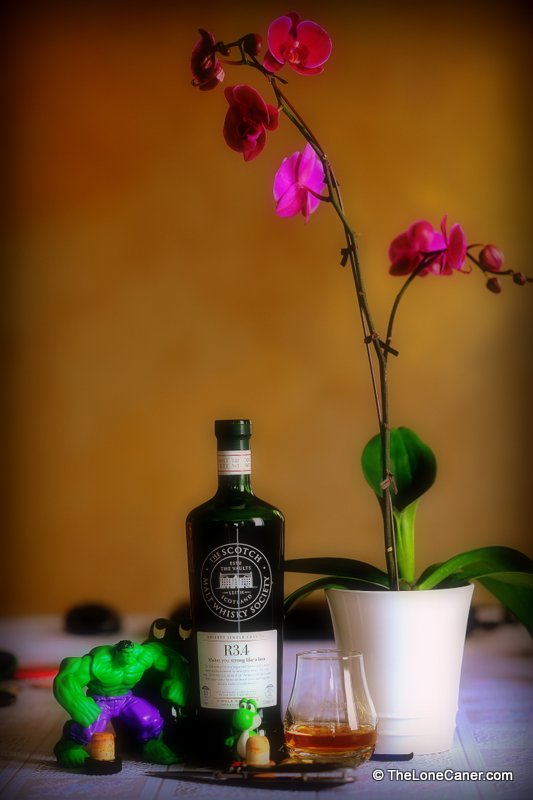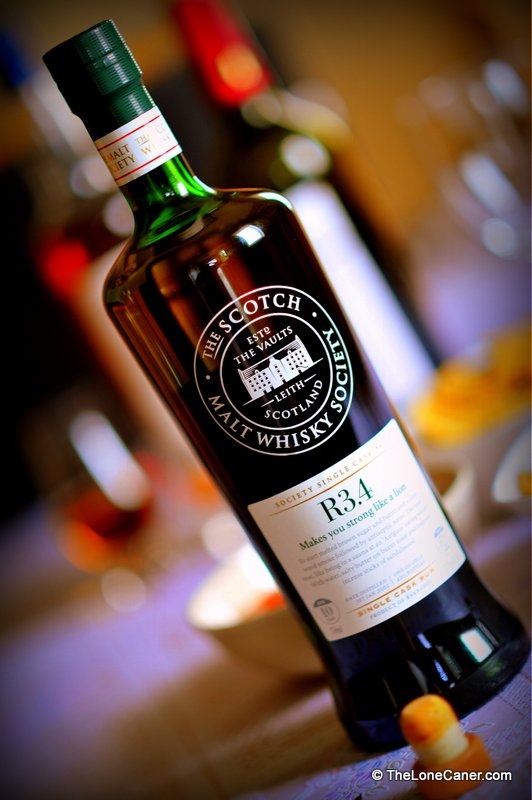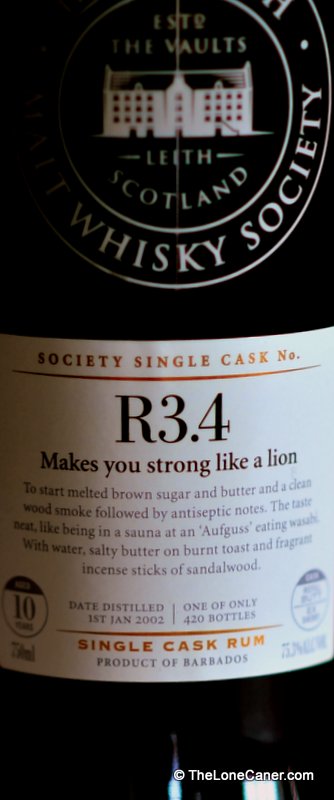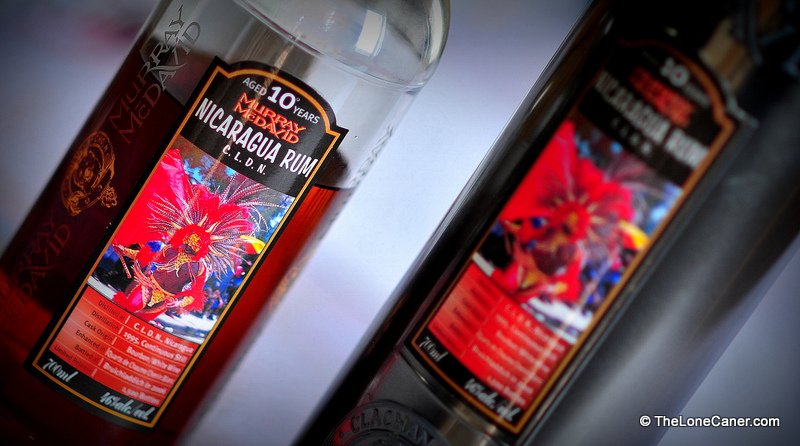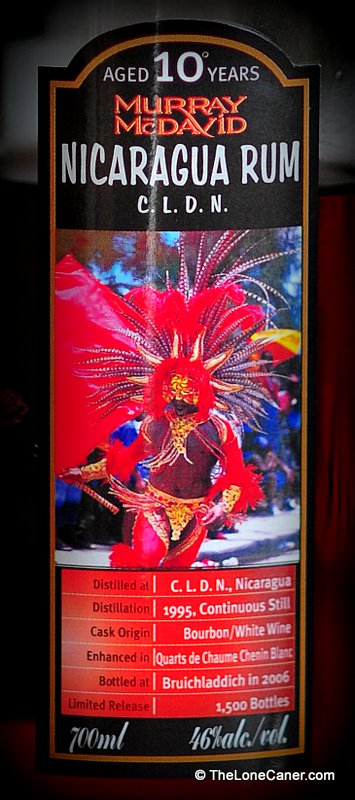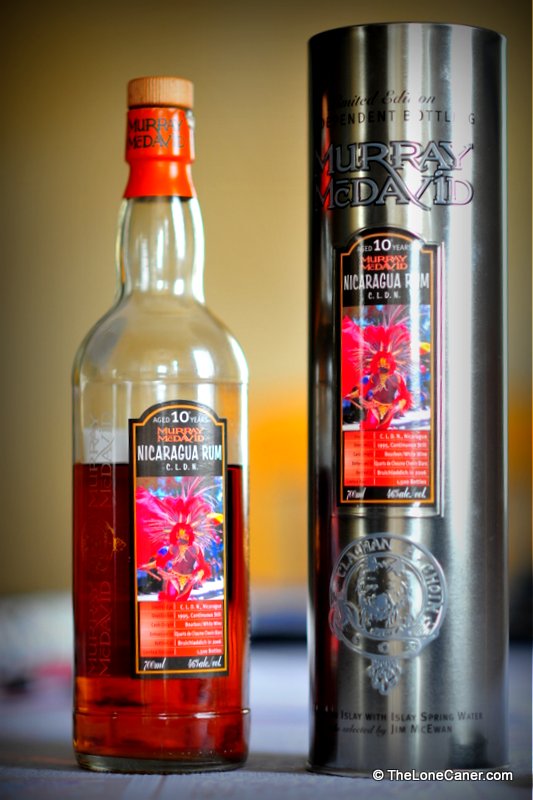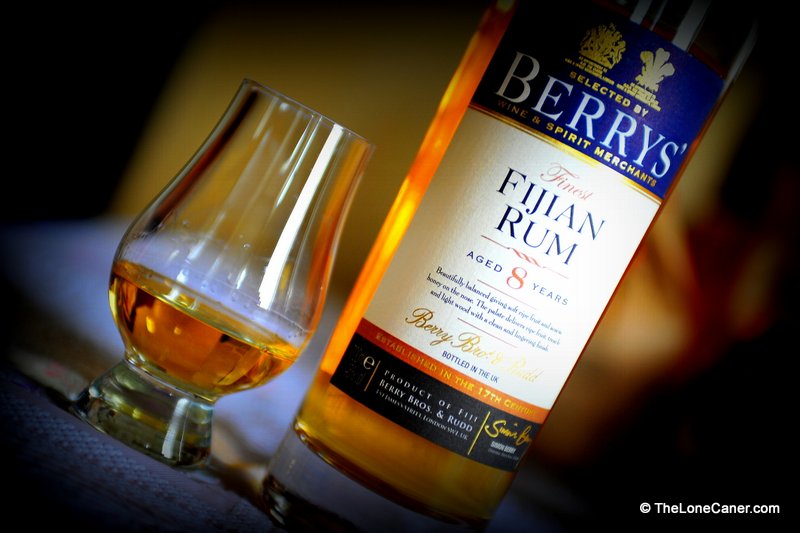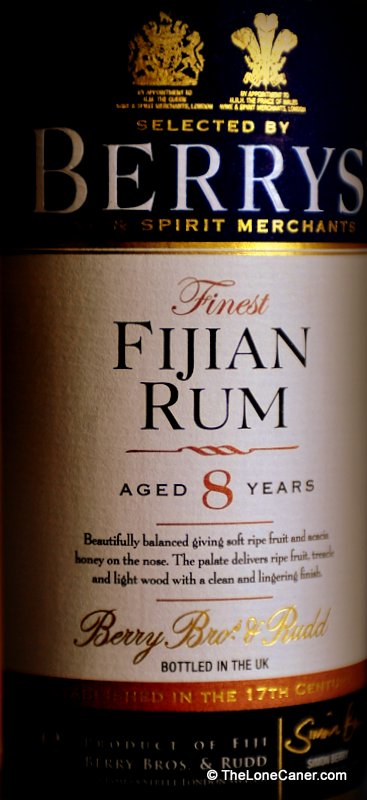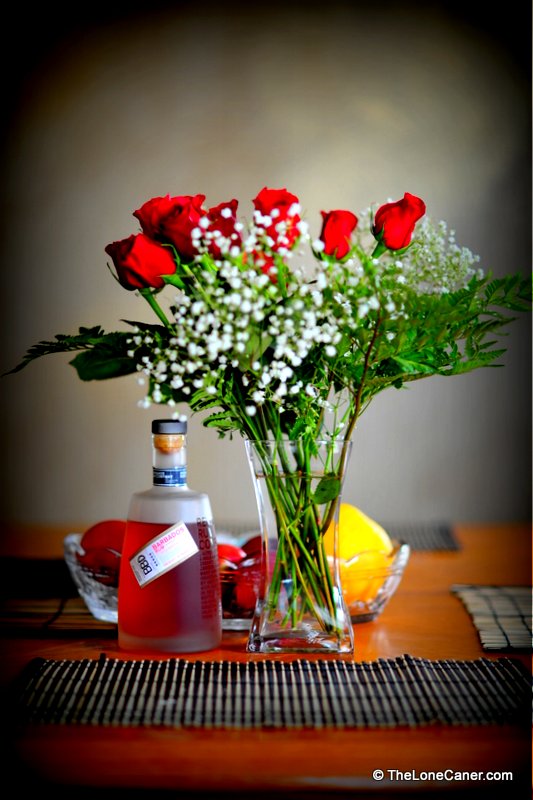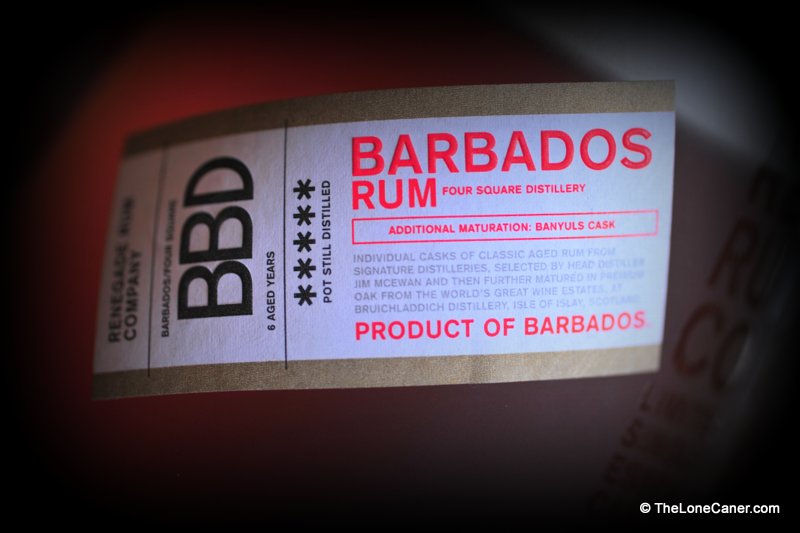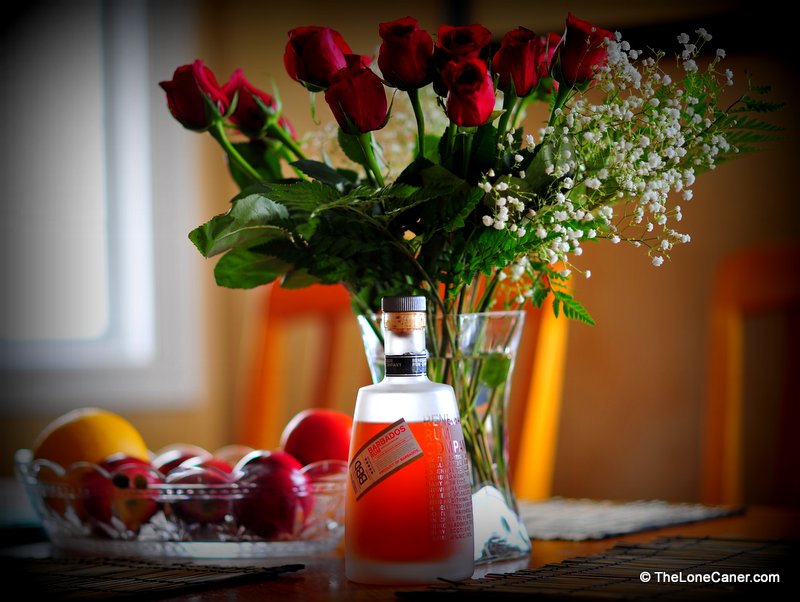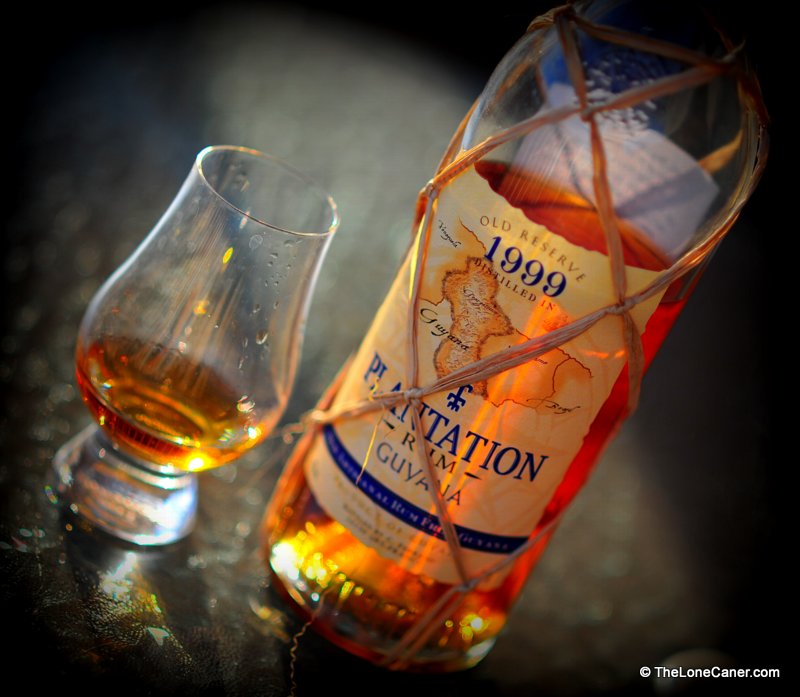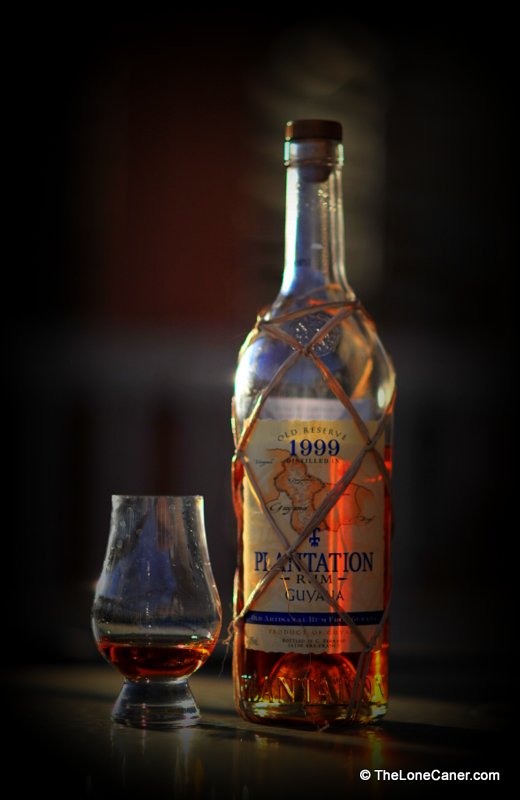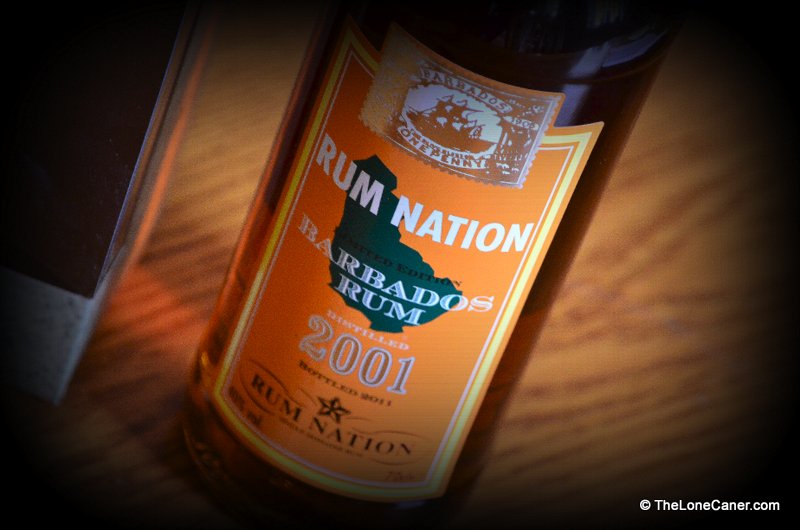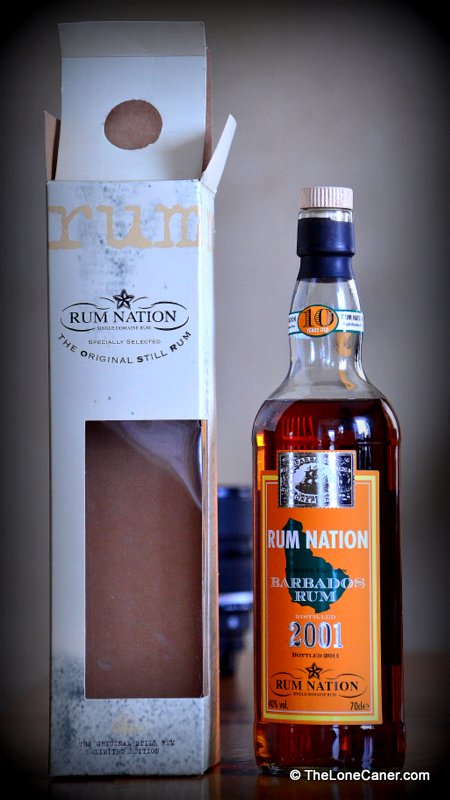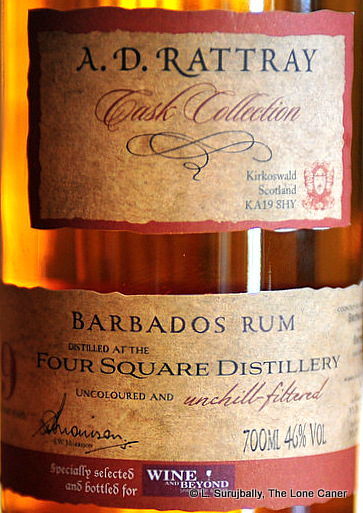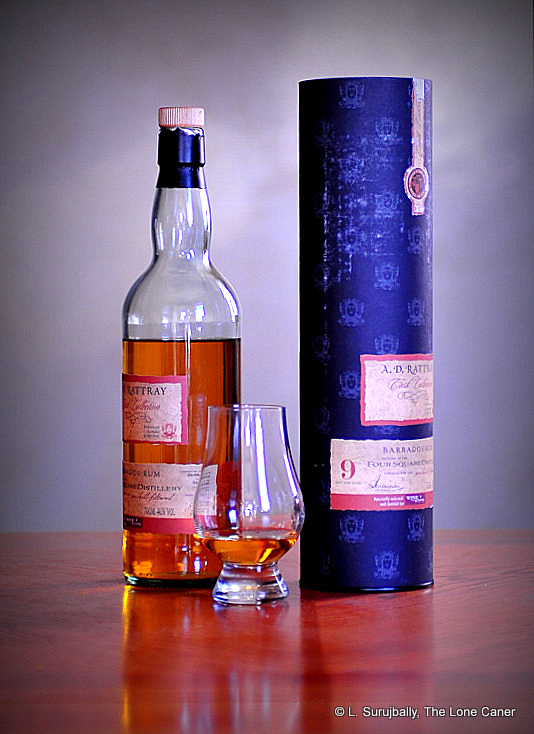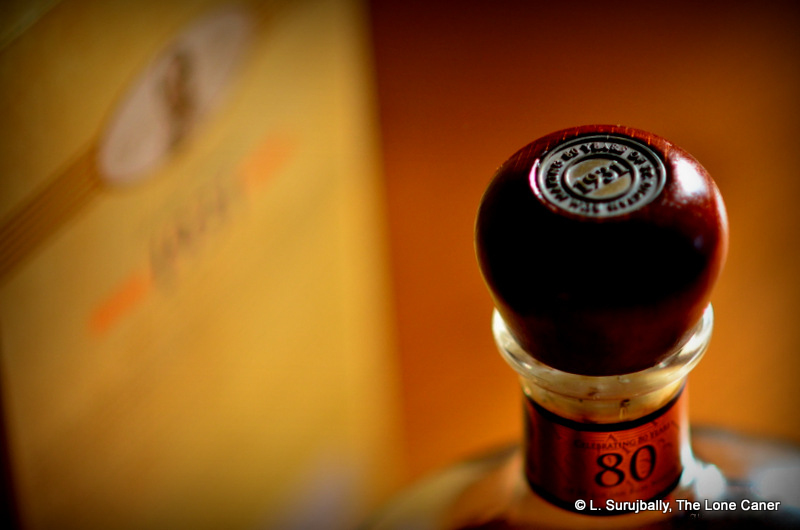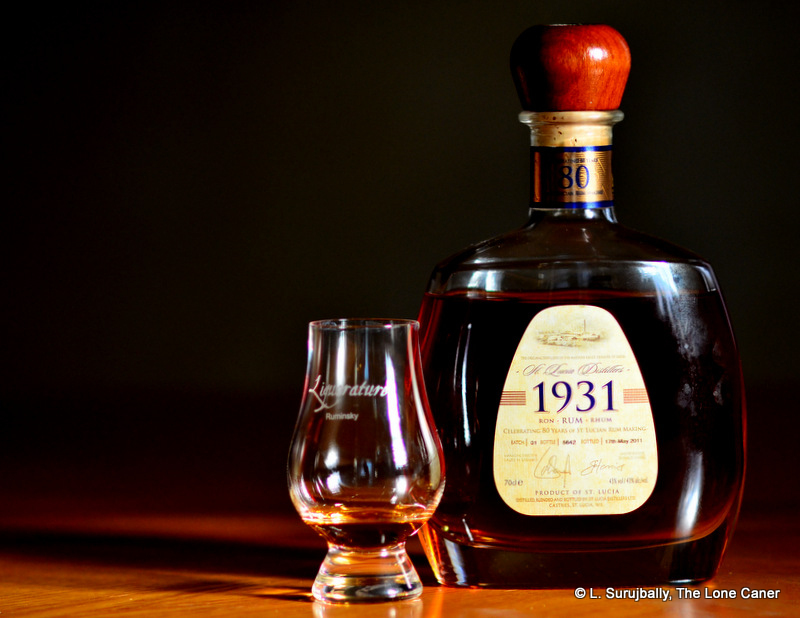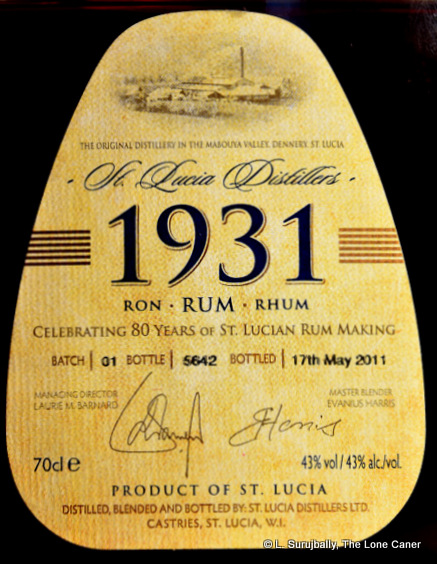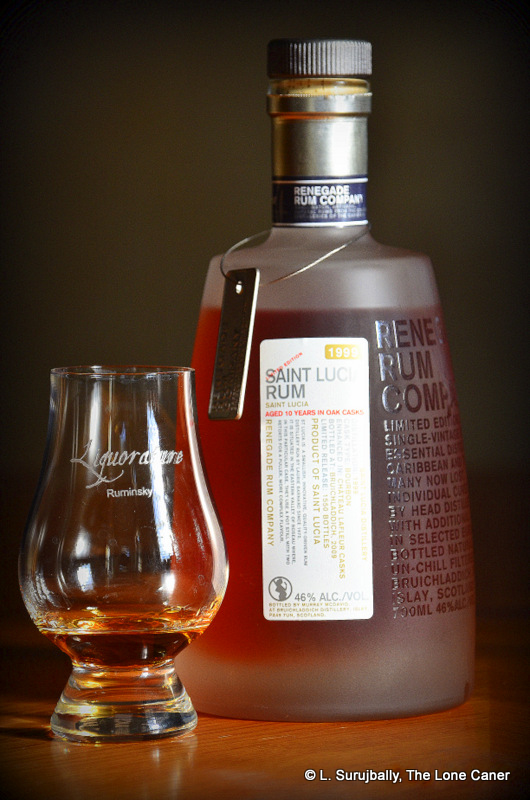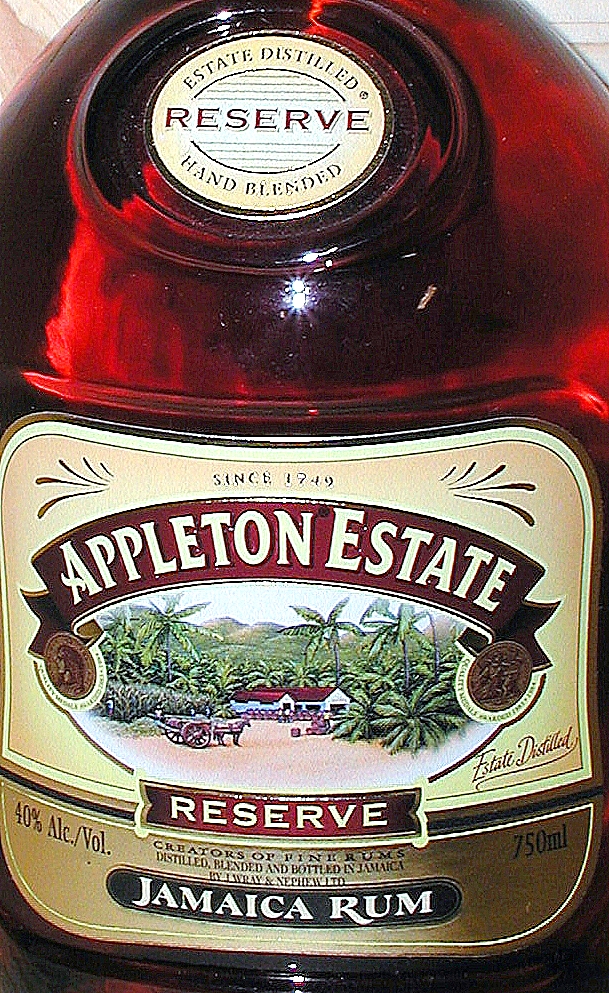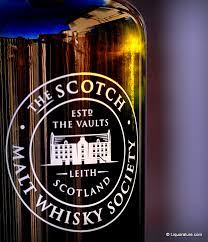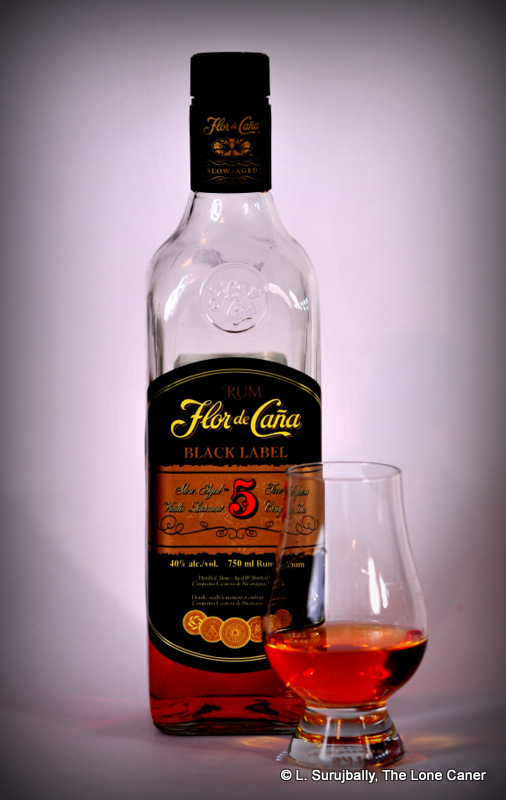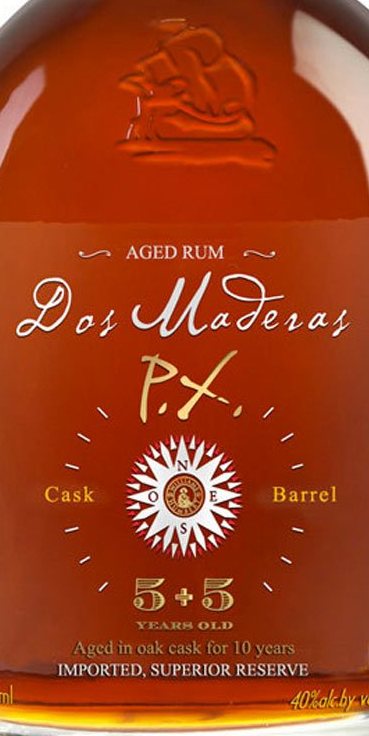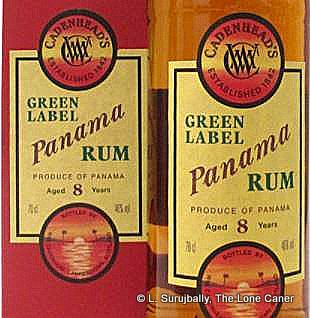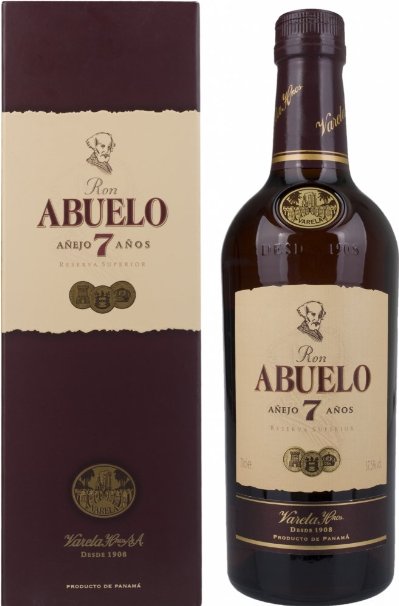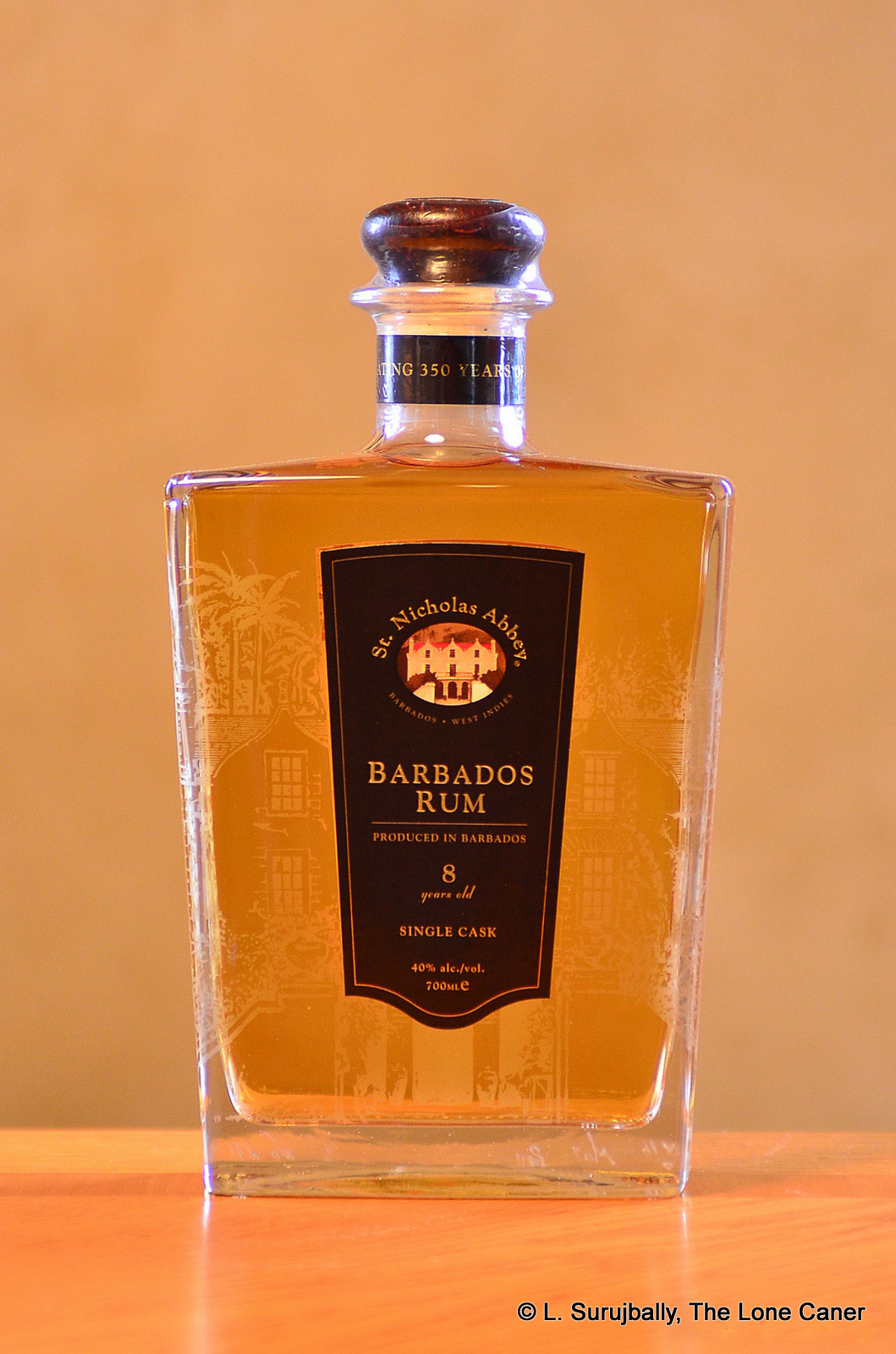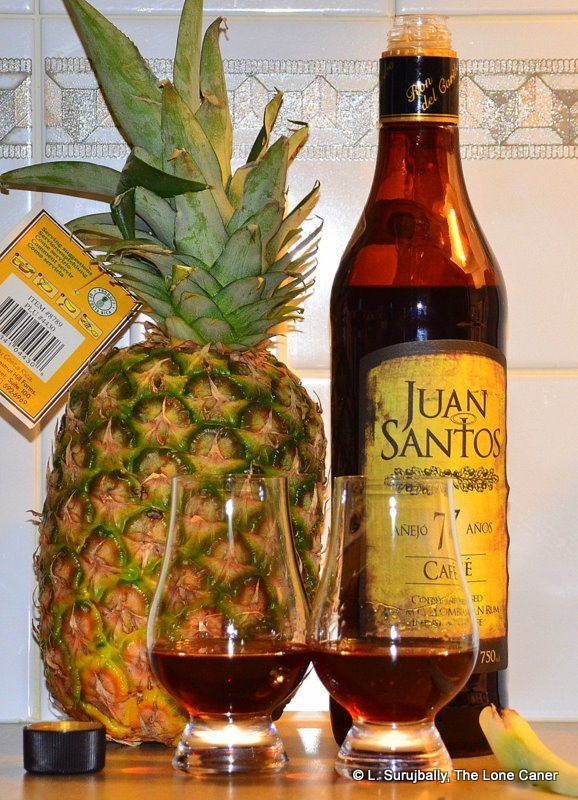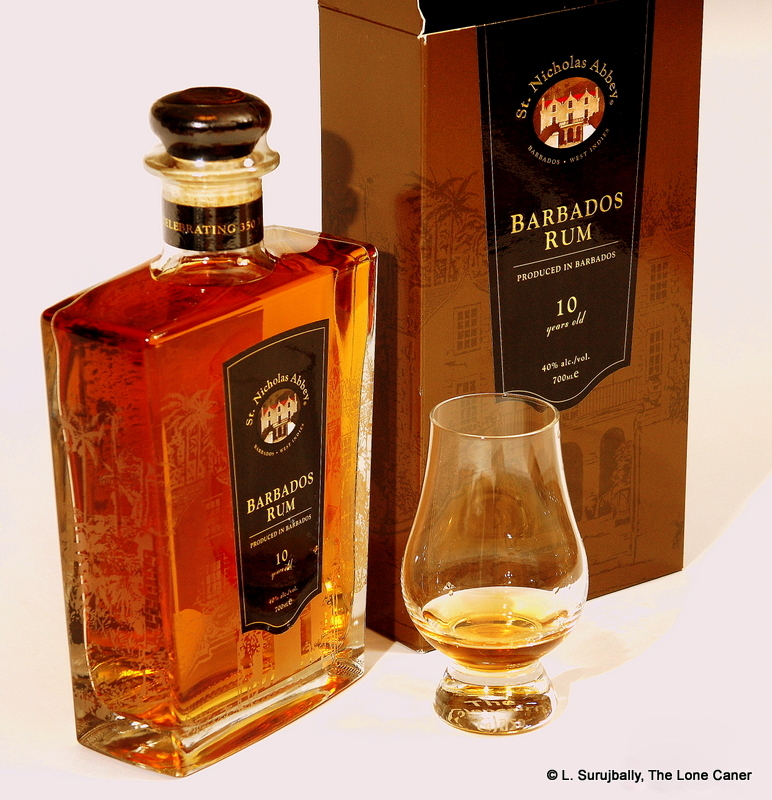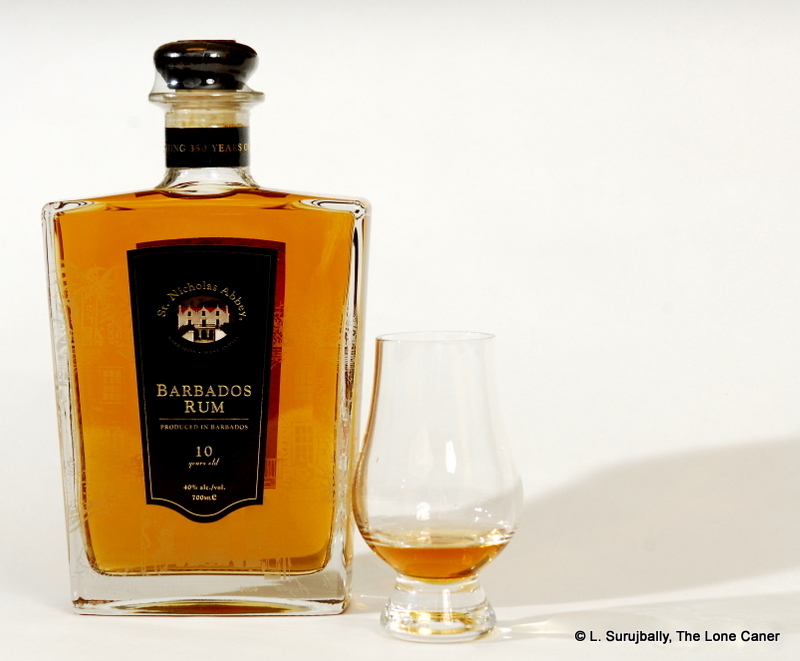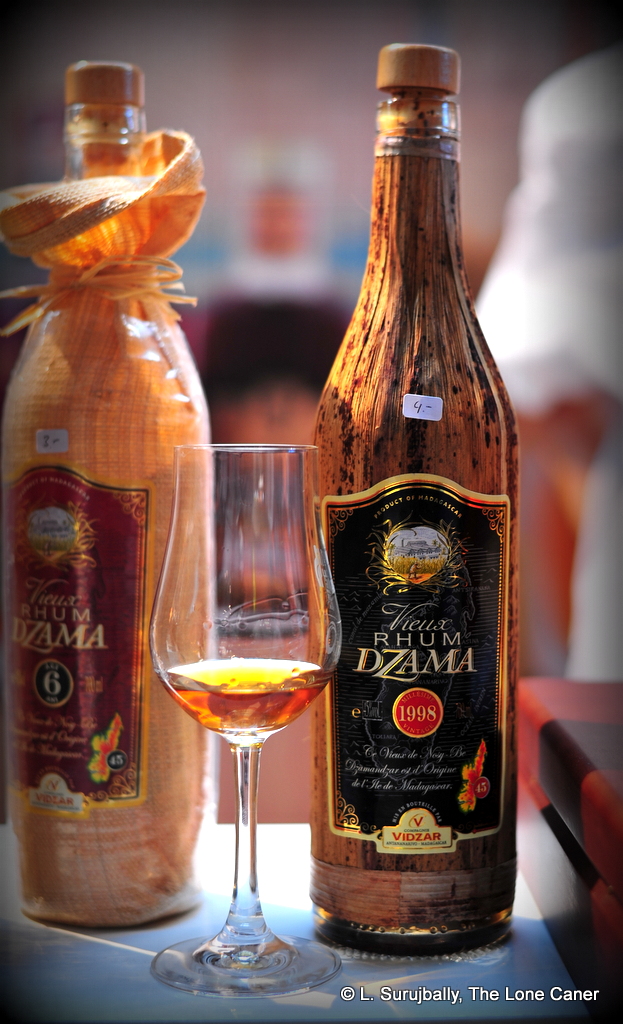
A remarkably well balanced and tasty rum from the Indian Ocean
In spite of the prevailing belief that rums are Caribbean almost by definition, it’s axiomatic that many other nations and regions produce them. Over the years I’ve found that the most readily identifiable and distinctive (I don’t say “best”) products, products that have a flavour profile all their own, usually hail from some distant part of the world where climatic and soil conditions are far removed from the norm: consider, for example the Bundaberg, the Old Port, or even the Tanduay. Now sure, flavourings are sometimes added to the mix with the heedlessness of Emeril chucking spices…but not always. Sometimes it’s just the terroire.
Such a one is the Rhum Vieux Millésimé 1998 ten year old, made and bottled in Madagascar from locally grown cane and molasses, offered at 45% in a bottle that is rather amusingly wrapped in a banana leaf (or a reasonable facsimile thereof). This is a rhum that won a gold medal at the International Wine and Spirits Competition in 2012, and is one lovely piece of work.
Take for starters, the initial nose: brown sugar, coffee and mocha, straight off, very smooth and inviting – 45% was a good strength for this rum. I looked at the labelling again with some surprise – was this a spiced rum and they forgot to mention it? Nope. What you got was it. It was followed by vanilla, cloves, nutmeg and a soft background of bananas, all quite unaggressive and easygoing. There was even some vague vegetal note there after a bit, almost imperceptible.
The palate broke little new ground, simply built on that excellent lead-in: more vanilla (not enough to make me suspicious about flavouring, yet I couldn’t dismiss the thought entirely), coffee, burnt sugar, nougat. Fried sweet bananas (I loved those as a kid), nuts, peaches. This rum was lovely, just lovely – soft and warm and exactly strong enough for what it was – a higher proof might have made it too spicy. There was even, after a few minutes and a drop of water, leather and the sweet perfume of aromatic cigarillos. Some ground walnuts rounded out the profile. The finish was surprisingly short, yet still that warmth persisted, and closing notes of white pepper, smoke and those walnuts again.
These tasting notes sound utterly conventional, don’t they? Yet they’re not, not really – the balance of the vegetal notes and vanilla and nuts and sweetness of bananas popping in oil is not at all like the Caribbean rums with which many of us are familiar; I imagine some of this taste profile comes from the Pernod Ricard barrels shipped to Madagascar to age this rum the requisite ten years; but perhaps equal credit comes from the cane itself and the environment in which it is made.
Dzama rum is made by Vidzar, one of those local companies like Banks DIH in Guyana, or Clarke’s Court in Grenada, which have a rather larger visibility in their home country than they do abroad (this may change as they expand their markets). The company was formed in 1982 due to the efforts of Mr. Lucien Fohine, who noted that the small sugar factory on the tiny island of Nosy Be produced a distillate that had distinctive flavours which persisted into the final distilled products…mostly low level rum for local consumption, to that point. After some investigation, he concluded it came from the ylang-ylang plant (also known as the macassar oil plant, or the perfume tree) whose roots intermingled with that of the cane. (If this rum is an example of the flavour holdover, he may be on to something, though I’m ambivalent about the science behind that).
In an attempt to distill a decent rum to elevate the craft of his island, he formed a company Vidzar (a contraction of Vieux Rhum de Dzamandzar), located close to the sugar cane fields of Nosy Be, by a village called Dzamadzar. The company makes a range of rums for sale, including the Dzama Club, 3 YO and 6 YO, the Dzama XV 15 year old and Cuvée Noire (untried by me) and is starting to sell in the European market. This particular ten year old was aged in the aforementioned Pernod Ricard barrels and was distilled in 1998 but the date itself is just a marker, not a commemoration of anything special (the current ten year old on the company site is the 2000 Millésimé) – I’ll hazard a guess that it was a series of barrels set aside by the master blender as simply being of higher quality.
I’ve remarked before that one rum does not sink a brand, or define it – yet I have to be honest and say that a bad one tends to make me leery about approaching others in the range, while conversely, a good one makes me enthusiastic to do so – that’s human nature. With this excellent rum hailing from a region I’ve not tried before, whose profile is remarkably distinctive and far from unpleasant, I’m pretty stoked to see what else Dzama has in the larder the next time I get a chance to buy one. You could do worse than trying some yourself…and this one would be an excellent place to start.
(#189. 84/100)
